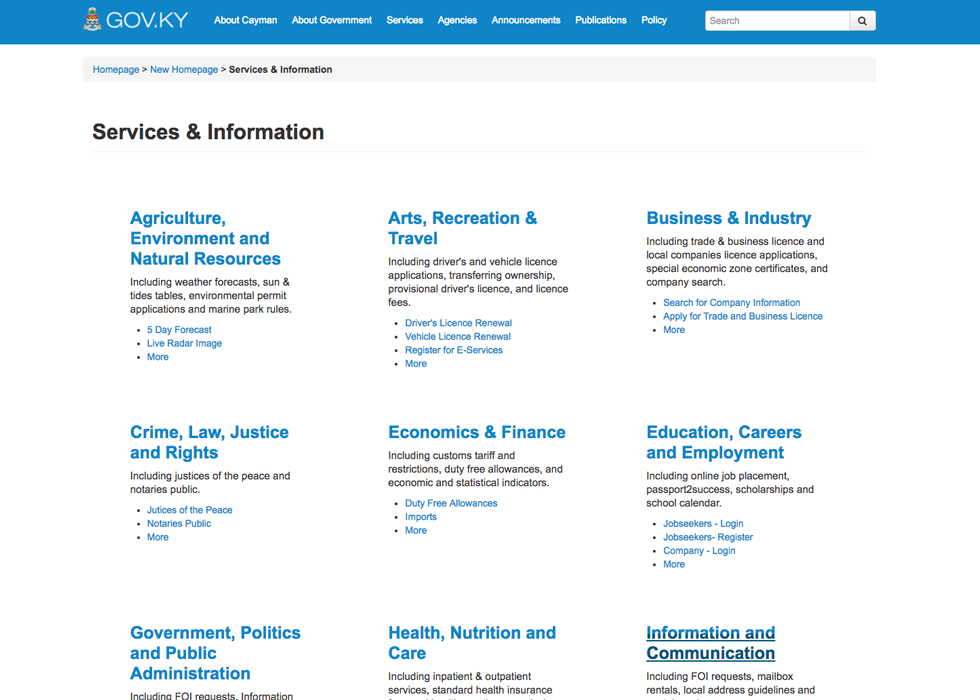When reviewing user feedback, a consistent theme was the difficulty people had in locating information. Often this information had been published but was just hard to find. Information was organised according to government agency, and we realised that users often did not know enough about the organisational structure of government to find what they were looking for.
Develop meaningful structure of entire web estate
The sites we managed fitted into three tiers:-
- One single main government site acted as a primary destination.
- Ministry/Portfolio sites published policy and aggregated news.
- Individual agency sites housed contact details, online services and news and other documents.
Defining ‘Web Services’
We started trying to identify what people wanted when they visited government websites.
Information Sometimes people were looking for a specific report or document but often they were looking for guidance on a particular process.
Download Forms Often people were looking to download certain official forms.
Online Transaction In certain cases, online services existed allowing users to perform certain transactions online.
We felt that a lot of these could be considered as ‘web services’. We did some work to make sure that this content was labelled in a clear and consistent manner, and in some cases collated information to make more comprehensive ‘guides’.
One Index to rule them all
We developed a new gov.ky portal site containing key information on the Cayman Islands and it’s government. This portal also contained an index of all the web services we had indentified. This meant that users had a single destination from which they could be redirected to other content. This content was indexed by meaningful categories to help connect users to the content they required.
Embracing the PDF
We realised that a lot of government information was circulated via PDF document. In the past we had tried to mark up this up and publish as HTML. There was a significant resource overhead to this approach. We decided to accept that the PDF was the currency of information with CIG, and develop the framework to make it easier for government employees to publish PDF’s and for users to search and locate information in this format. We developed our document publishing to enable the creation of document collections, including updated versions of documents. We also developed tools so that users could filter their searches by publication date, document title and publishing agency.



